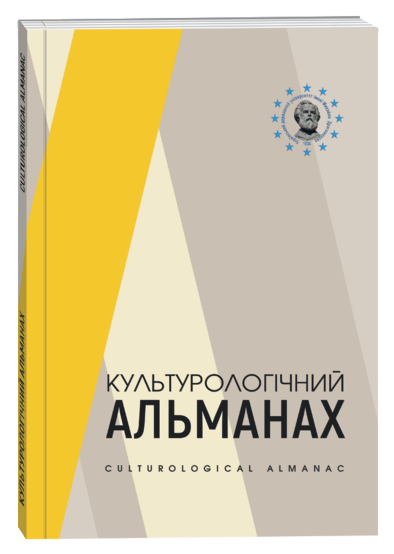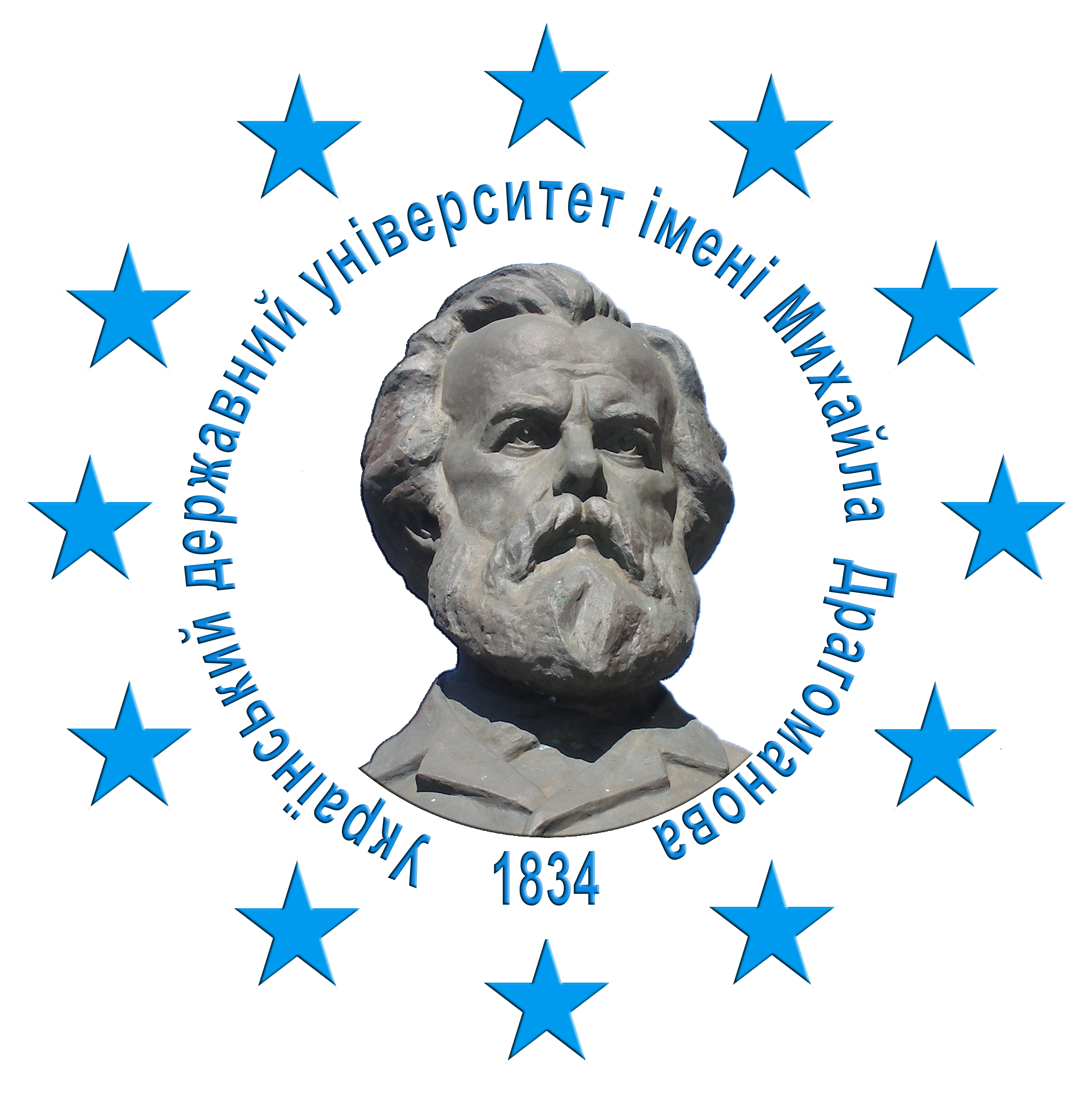ЦИФРОВА КУЛЬТУРНА СПАДЩИНА ЯК ФЕНОМЕН ЦИФРОВОЇ КУЛЬТУРИ
DOI:
https://doi.org/10.31392/cult.alm.2022.3.28Ключові слова:
діджиталізація, культурна спадщина, оцифрування культурної спадщини, цифрова культура, цифровізація у сфері культури, 3D-моделювання, ремедіація, агрегування, цифровий контент, цифрові інфраструктуриАнотація
У статті розглядаються особливості впровадження та використання цифрових технологій з метою збереження та популяризації культурної спадщини. Узагальнено та проаналізовано зарубіжний та український досвід вивчення, збереження та поширення культурної спадщини за допомогою цифрових технологій. Представлено огляд наукових досліджень з питань розвитку діджиталізації культурної спадщини. Наголошується важлива роль цифровізації інформаційного простору культурного середовища у справі популяризації культурних цінностей, їхньому застосуванню, ефективному залученню широкої аудиторії до культурно-історичних контекстів країни. Обґрунтовується думка, що з розвитком діджиталізації культурної спадщини пов’язані технічні особливості цифрових інфраструктур, що дозволяють сприймати їх як структури, що створюють та поширюють знання, яке може бути вписане в інші контексти та поєднане з даними з інших джерел.
Посилання
Офіційний сайт цифрової бібліотеки «Європіана». URL: https://www.europeana.eu/en/about-us.
Порятунок культурної спадщини України (2022). Голос Америки. URL: https://www.golosameriki.com/a/saving-ukraine-culture/6565932.html (дата звернення: 07.08.2022).
Русаков С.С., Пятковська Ю.В. (2015). Інструменти цифрової культури: культурологічний погляд на інновації в освітній галузі. Науковий часопис Національного педагогічного університету імені М.П. Драгоманова : збірник наукових праць. Київ, Вип. 33 (46). С. 130–136. Серія 7 «Релігієзнавство. Культурологія. Філософія».
Трач Ю.В. (2021). Цифрові технології у культурі сучасного суспільства: тенденції і перспективи : автореф. дис. на здобуття наук. ступеня д-ра культурології : 26.00.01 «Теорія та історія культури». М-во освіти і науки України. КНУКіМ. Київ, 34 с.
Чорновол К. (2022) Війна за історію: як Україна захищає свою культурну спадщину від посягань Росії. Апостроф. TV. URL: https://apostrophe.ua/ua/news/kyiv/cultura/2022-06-27/voyna-za-istoriyu-kak-ukraina-zaschischaetsvoe-kulturnoe-nasledie-ot-posyagatelstv-rossii/272822 (дата звернення: 07.08.2022).
Allen L., Frost H., Padilla Th., Potvin S., Roke E.R., Varner S. (2019). The Collections as Data Framework: A Review from the Always Already Computational Project. URL: https://tdlir.tdl.org/handle/2249.1/156364.
Arnold M. (1969). Culture and Anarchy. Cambridge : Cambridge University Press.
Bode K. (2020). Why you can’t model away bias. Modern Language Quarterly 81.1.
Gorbul T., Rusakov S. (2022). Cultural heritage in the context of digital transformation practices: experience of Ukraine and the Baltic States. Baltic Journal of Economic Studies. Volume 8. Number 4. Riga, Latvia : “Baltija Publishing”, 2022, 58–69. URL: https://doi.org/10.30525/2256-0742/2022-8-4-58-69.
Cameron F. (2003). Digital Futures I: Museum collections, digital technologies, and the cultural construction of knowledge. Curator. № 46. P. 325–340.
Cameron F.R. (2019). Theorising heritage collection digitisations in global computational infrastructures / In Hannah Lewi, Wally Smith, Dirk vom Lehn, Steven Cooke (eds). The Routledge International Handbook of New Digital Practices in Galleries, Libraries, Archives, Museums and Heritage Sites, Routledge.
Castells M. (1996). The Rise of the Network Society, the Information Age: Economy, Society and Culture. Oxford : Oxford University Press.
Cesare Concordia, Stefan Gradmann, Sjoerd Siebinga (2010). Not just another portal, not just another digital library: A portrait of Europeana as an application program interface. / In: International Federation of Library Associations and Institutions. № 36(1). Pp. 61–69.
Chabries D.M., Booras S.W., Bearman G.H. (2003). Imaging the past: recent applications of multispectral imaging technology to deciphering manuscripts. Antiquity, № 77. P. 59–72.
Chenhall R.G. (1975). Museum cataloguing in the computer age, Nashville, TN : American Association for State and Local History.
Couldry N. and Hepp A. (2017). The Mediated Construction of Reality. Cambridge : Polity Press.
Crane G., & Wulfman C. (2003). Towards a cultural heritage digital library. / In L. Decambre, G. Henry, & C.C. Marshall (Eds.). Proceedings of the 3th ACM/IEEE-CS Joint Conference on Digital Libraries. Pp. 75–86.
Deuze M. (2011). Media life. Media Culture and Society. № 33(1). Pp. 137–148.
Deuze M. (2006). Participation, Remediation, Bricolage: Considering Principal Components of a Digital Culture. The Information Society. № 22(2). P. 63–75.
Doerr M., Gradmann S. (2012). The Europeana Data Model (EDM). Paper presented at the World Library and Information Congress: 76th IFLA General Conference and Assembly, Gothenburg, Sweden.
Elkins J. (1999). The Domain of Images. Ithaca, NY : Cornell University Press,
Evans J., & Hall, S. (1999). Visual culture: The reader. London : Sage and Open University Press.
Flanders Julia & Fotis Jannidis (2016). Data Modeling. / In New Companion to Digital Humanities, edited Susan Schreibman, Ray Siemens, і John Unsworth. New York : Wiley & Sons. P. 229–237.
Flyverbom M., Murray J. (2018). Datastructuring – Organizing and curating digital traces into action. Big Data and Society. № 5. P. 1–12.
Gentry K., & Smith L. (2019). Critical heritage studies and the legacies of the late-twentieth century heritage canon. International Journal of Heritage Studies. P. 1–21.
Giacometti A., Campagnolo A., MacDonald L., Mahony S., Robson S., Weyrich T., Terras M., Gibson A. (2017). The value of critical destruction: Evaluating multispectral image processing methods for the analysis of primary historical texts. Journal of Digital Scholarship in the Humanities. Volume 32. Issue 1. Pages 101–122.
Harrison R. (2013). Heritage: Critical Approaches. Routledge, Abingdon and New York.
Harrison R., ed. (2010). Understanding the Politics of Heritage. Manchester : Manchester University Press, with Open University.
Harvey D. (1990). The Condition of Postmodernity: An Enquiry into the Origins of Cultural Change. Cambridge : Blackwell.
Harvey D.C. (2001). Heritage Pasts and Heritage Presents: Temporality, Meaning and the Scope of Heritage Studies. International Journal of Heritage Studies. № 7 (4). P. 319–338.
Hayles N.K. (2012). How We Think: Digital Media and Technogenesis. Chicago, IL : University of Chicago Press,
Hindmarch J., Terras M., Robson S. (2020). On virtual auras. The cultural heritage object in the age of 3D digital reproduction. / In Hannah Lewi, Wally Smith, Dirk vom Lehn, Steven Cooke (eds). The Routledge International Handbook of New Digital Practices in Galleries, Libraries, Archives, Museums and Heritage Sites, Routledge.
Hughes L. (2004) Digitizing collections: strategic issues for the information manager. London : Facet Publishing,
Hyvonen E. (2020). Using the Semantic Web in Digital Humanities: Shift from data publishing to dataanalysis and serendipitous knowledge discovery. Semantic Web – Interoperability, Usability, Applicability. № 11. P. 187–193.
Jones Mike, and Deb Verhoeven. (2016). Treasure Trove: Why Defunding Trove Leaves Australia Poorer. The Conversation. URL: https://openresearch-repository.anu.edu.au/bitstream/1885/200473/2/01 _Jones_Treasure_Trove%253A_why_defunding_2016.pdf.
Kersten T.P., Tschirschwitz F., Deggim S., & Lindstaedt M. (2018). Virtual reality for cultural heritage monuments – from 3D data recording to immersive visualisation. In Euro-Mediterranean Conference. Springer, Cham. Pp. 74–83.
Koller D., Frischer B. and Humphreys G. (2009). “Research challenges for digital archives of 3D cultural heritage models”. In ACM Jounal on Computing and Cultural Heritage. Vol. 2 Iss. 3, Dec.
Liang H. (2012). Advances in multispectral and hyperspectral imaging for archaeology and art conservation. Appl Phys A Mater Sci Process. № 106. P. 309–323.
Liu A. (2017). Toward Critical infrastructure Studies: Digital Humanities. New Media Studies, and the Culture of Infrastructure. University of Connecticut. 23 February.
Lynch C.A. (2002). Digital collections, digital libraries and the digitization of cultural heritage information. First Monday, 7(5).
Mak B. (2014). Archaeology of a Digitization. Journal of the Association for Information Science and Technology. № 8. P. 15–26.
Manovich L. (2001). The Language of New Media. Cambridge, MA : MIT Press.
McCarty, W. (2005). Humanities Computing. London : Palgrave Macmillan.
Mirzoeff N. (1998). What is visual culture? / In N. Mirzoeff (Ed.). The Visual Culture Reader. New York : Routledge. Pp. 1–13.
Parry R. (2007). Recording the Museum: Digital Heritage and the Technologies of Change. Taylor & Francis.
Poirier L., Fortun K., Costelloe-Kuehn B., Fortun M. (2020). Metadata, Digital Infrastructure, and the Data Ideologies of Cultural Anthropology. / In: Crowder J., Fortun M., Besara R., Poirier L. (eds). Anthropological Data in the Digital Age. Palgrave Macmillan, Cham.
Schwartz J.M. (2004). Negotiating the visual turn: new perspectives on images and archives. № 67. P. 107–122.
Sher J. (1986). Museum documentation systems and computers: USSR experience. / In Light, R.B., Roberts, D.A., and Stewart, J.D. (eds). Museum Documentation Systems. Developments and Applications. Butterworths: London, Boston, pp. 287–292.
Smith Laurajane and Natsuko Akagawa (eds) (2009). Intangible Heritage. London : Routledge.
Tanner S., Bearman G. (2009). Digitising the Dead Sea Scrolls: Archiving. Arlington, VA: The Society for Imaging Science and Technology. Pp. 119–123.
Terras M. (2006). Image to Interpretation: Intelligent Systems to Aid Historians in the Reading of the Vindolanda Texts. Oxford Studies in Ancient Documents. Oxford University Press, Oxford.
Thiers B.M., Tulig M.C., Watson K.A. (2016). Digitization of the new york botanical garden herbarium. Brittonia.№ 68(3). P. 24–33.
Thylstrup N.B. (2018). The politics of mass digitization. The MIT Press, Cambridge.
Tylor E.B. (1958). Primitive culture. New York : Harper & Row (Original work published 1871).
Van Dijck J., Poell T. and Waal M. de (2018). The Platform Society. New York : Oxford University Press.
Zuboff S. (2019). The Age of Surveillance Capitalism: The Fight for a Human Future at the New Frontier of Power. New York : Profile Books.








